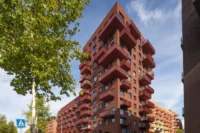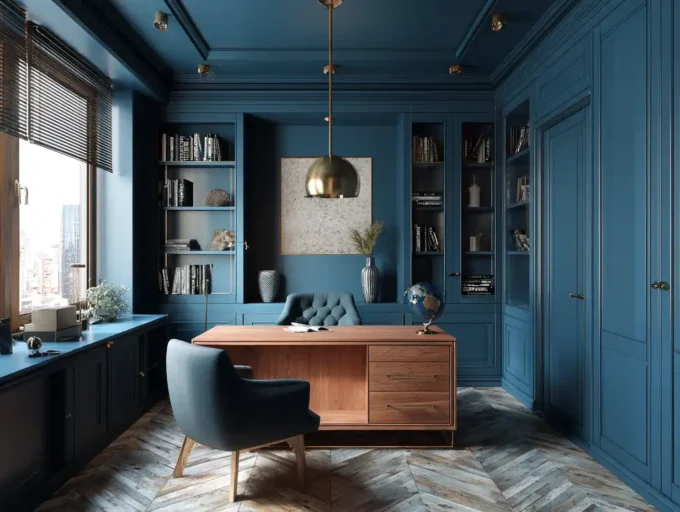Designing a residence is more than just choosing paint colors and furniture styles. It’s about creating a space that reflects our lifestyle, meets our needs, and stands the test of time. Whether we’re building from scratch or renovating an existing space, thoughtful planning can make all the difference in achieving a harmonious home.
As we embark on this journey, we must consider various factors that influence our design choices. From functionality and sustainability to aesthetics and budget, each element plays a crucial role in shaping our living environment. By keeping these key aspects in mind, we can ensure our residence becomes a true sanctuary tailored to our unique preferences and requirements. Let’s dive into the essential considerations that will guide us in crafting the perfect home.

Importance Of Residence Design
Designing a residence significantly impacts our daily lives, influencing comfort, functionality, and well-being. Thoughtful design fosters an environment that supports our routines and enhances our lifestyle choices.

Reflection of Lifestyles
Design captures our lifestyles, aligning spaces with how we live. For example, an open floor plan suits families who value togetherness, while defined rooms cater to those needing privacy.
Functionality
Effective design prioritizes functionality. We must consider traffic flow and usage patterns to create spaces that facilitate our everyday activities. Layouts should allow for efficient movement and easy access to essential areas.
Sustainability
Sustainable design practices promote energy efficiency and environmental responsibility. Choosing eco-friendly materials and maximizing natural light contributes to sustainability, reducing our ecological footprint while creating healthier living spaces.
Budget Considerations
Design impacts our finances. Setting a realistic budget prevents overspending and ensures we make informed choices. We need to balance elements like aesthetics and functionality while keeping costs manageable.
Local Climate
Local climate influences design decisions. Appropriate insulation, window placement, and outdoor space usage cater to weather patterns and help maintain comfort throughout the year.
Aesthetic Appeal
Aesthetic appeal enhances our emotional connection to the space. Thoughtfully chosen colors, textures, and materials create ambiance and reflect our personal style, fostering a sense of belonging.
By recognizing these factors, we can create residences that truly reflect our needs and aspirations, ensuring they serve us well for years to come.
Key Factors To Consider
We recognize several key factors crucial in designing a residence that meets our needs and aspirations. By focusing on space planning, environmental considerations, and aesthetics, we can create a harmonious living environment.

Space Planning
Space planning optimizes the layout of our residence to enhance functionality. We prioritize flow and accessibility, ensuring that each area serves its intended purpose efficiently. Open floor plans foster connection between spaces, while designated zones for specific activities—like cooking, dining, and relaxing—accommodate our lifestyle. We also utilize furniture and fixtures that maximize utility without compromising comfort, allowing us to create a welcoming atmosphere.
Environmental Considerations
Environmental considerations play a vital role in our design choices. We factor in energy efficiency and resource sustainability, opting for materials that minimize our ecological footprint. Locating our residence to take advantage of natural light reduces lighting costs, and incorporating passive heating and cooling strategies can lower energy consumption. Additionally, selecting native landscaping supports local biodiversity while requiring less maintenance. These choices contribute to a healthier environment and reduce long-term operating costs.
Aesthetics And Style
Aesthetics and style create the emotional resonance of our residence. We choose design elements that reflect our personalities and values, establishing a unique character for our home. Color palettes, textures, and architectural details come together to evoke specific moods and feelings. Incorporating personal artwork and heirlooms adds warmth and individuality, ensuring our residence resonates deeply with us. Balancing beauty and functionality allows us to enjoy a space that is both pleasing and practical.
Functional Aspects Of Design
When designing a residence, addressing functional aspects ensures that our living spaces are efficient and comfortable. We must prioritize accessibility and effective storage solutions to enhance the usability of our homes.

Accessibility
Accessibility plays a vital role in residential design. We must consider the movement and ease of access for all individuals, including those with mobility challenges. Selecting wider doorways, installing ramps, and incorporating non-slip flooring significantly improves navigation. Strategically placing furniture can prevent obstructions and enhance flow. Moreover, designing bathrooms with grab bars and adjustable-height features ensures safety and comfort for everyone. Implementing these elements creates a welcoming environment that accommodates diverse needs.
Storage Solutions
Effective storage solutions significantly impact home organization and functionality. We can maximize space by utilizing built-in cabinetry, under-stair storage, and multi-functional furniture, such as ottomans with hidden compartments. Installing shelving units in commonly used areas creates accessible storage for daily items. Additionally, designing closets with customizable options allows us to adapt storage to specific needs. Thoughtful consideration of storage not only declutters our spaces but also contributes to overall peace of mind and efficiency in our daily routines.
Budgeting And Costs
Budgeting plays a vital role in the design process of a residence. Balancing costs with quality materials and design elements helps ensure a functional and aesthetically pleasing home.

Material Choices
Material choices significantly impact both aesthetics and budget. Selecting high-quality materials may yield higher upfront costs but often results in long-term savings through durability and reduced maintenance. We should consider options like sustainable wood, brick, or stone, which not only enhance the home’s appearance but also offer longevity. For example, bamboo flooring provides an eco-friendly option, while maintaining style. We also need to account for varying costs of finishes, fixtures, and appliances. Prioritizing a blend of affordability and quality ensures that our residence meets both aesthetic goals and budgetary constraints.
Long-Term Maintenance
Long-term maintenance considerations directly influence overall costs. Choosing materials that require minimal upkeep, such as fiber cement siding or metal roofing, can reduce ongoing expenses. We should also evaluate the frequency and expense of repairs associated with specific materials before making selections. Additionally, implementing energy-efficient appliances and systems lowers utility bills over time. For example, opting for LED lighting and Energy Star-rated appliances leads to significant savings. By incorporating durable materials and energy-efficient systems, we enhance our residence’s longevity while optimizing our budget.
Conclusion
Designing a residence involves numerous essential considerations that influence our daily lives and overall well-being. Thoughtful planning ensures our homes are not only visually appealing but also functional and reflective of our lifestyles.
We prioritize effective space planning to enhance functionality, promoting efficient flow and accessibility. Environmental considerations play a vital role, urging us to integrate energy-efficient materials and designs that minimize our ecological footprints. Emphasizing natural light and native landscaping further aligns our homes with sustainable practices.
Aesthetics significantly impact our emotional connection to our residence, which is why we focus on design elements that mirror our personal values and unique character. Balancing beauty and functionality remains critical; our living spaces should be both pleasing to the eye and practical for everyday use.
Accessibility remains an important factor, particularly in accommodating diverse needs. Implementing wider doorways, ramps, and non-slip flooring ensures everyone can enjoy our spaces. Additionally, incorporating effective storage solutions—like built-in cabinetry and multi-functional furniture—maximizes organization and usability within our homes.
Budgeting is a crucial element in this process. We emphasize selecting quality materials that offer durability and aesthetic appeal while keeping costs manageable. By choosing sustainable options like wood, brick, or stone, we invest in long-term savings and reduce maintenance requirements. Incorporating energy-efficient systems not only enhances our residences but also optimizes our overall budget.
Ultimately, each aspect we consider in the design process contributes to creating a harmonious, personalized living environment that meets our aspirations and needs for years to come.
- bespoke home design ideas
- creating a custom home
- Custom Home Design
- customized home architecture
- designing a home for your lifestyle
- home design for lifestyle
- home design lifestyle tips
- house design considerations
- innovative residential design
- lifestyle home construction
- lifestyle-driven home planning
- lifestyle-oriented home design
- personalized home planning
- personalized residence design
- residence design inspiration
- residential architecture advice
- residential design tips
- residential design trends
- tailored home architecture
- unique home design ideas
















Leave a comment